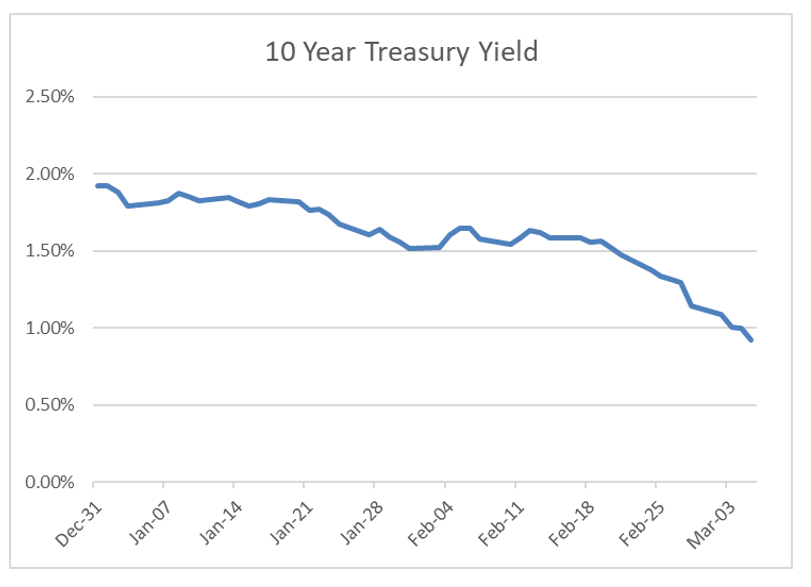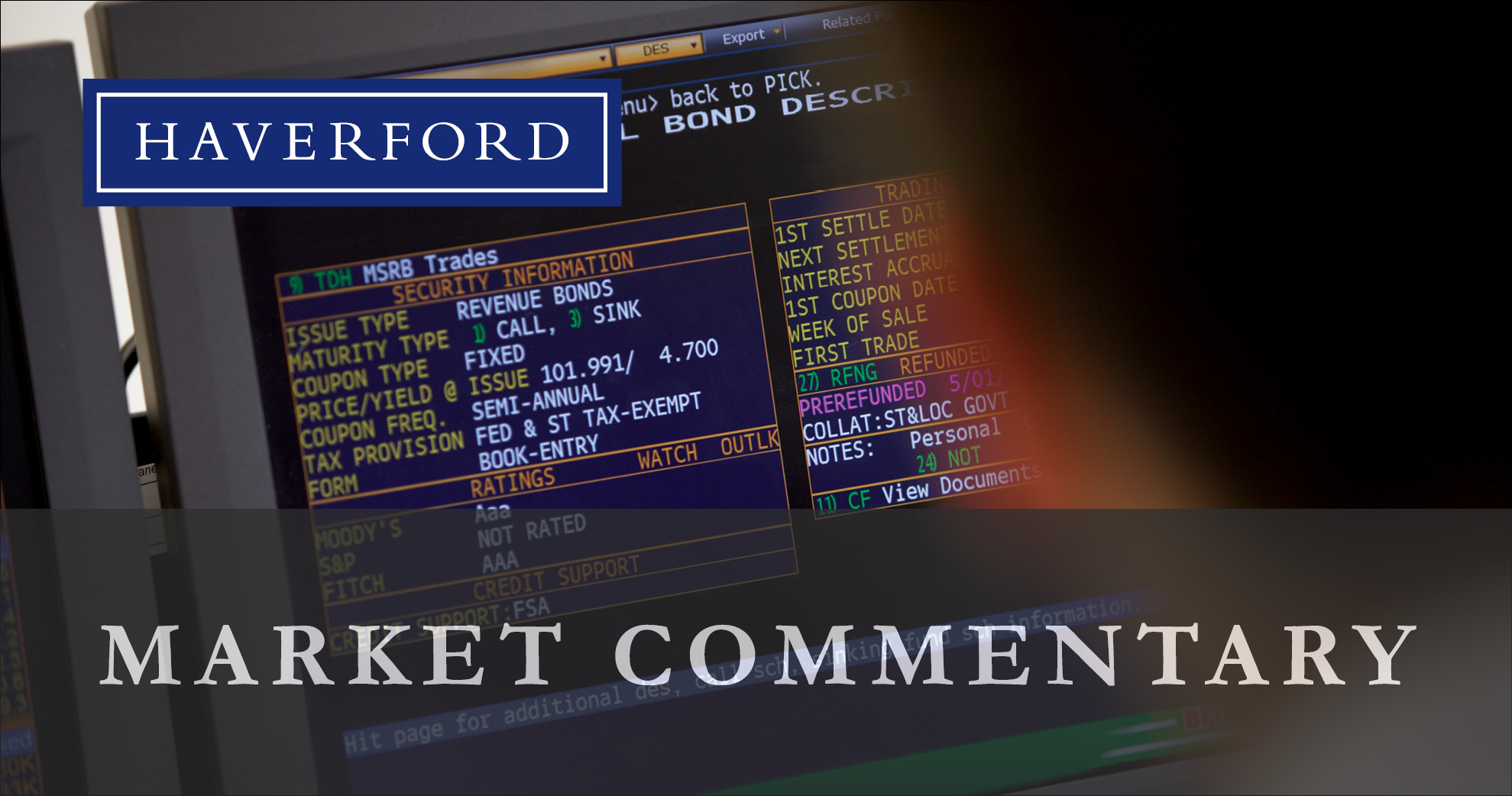Tim Hoyle, CFA, Co-Chief Investment Officer
thoyle@haverfordquality.com
John Donaldson, CFA, Vice President & Director of Fixed Income
jdonaldson@haverfordquality.com
Treasury Rates Fall Below 1%
Market volatility has been extreme on news of increased cases of COVID-19. When considering the benefits of asset allocation, investors typically own fixed income securities as a hedge against equity volatility. Safe-haven bonds are expected to increase in value during times of market stress.
Bonds have reacted just as expected during this time of economic uncertainty. The value of the benchmark ten-year treasury has increased 6% year-to-date as the yield on the bond dropped from 1.92% to 0.92%. U.S. investors have never had to grapple with rates this low.

Source: FactSet Research Systems
Why Have Rates Fallen?
When the 10-year treasury yield fell below the Federal Funds rate on February 28th, it sent a signal to the Federal Reserve to cut the Fed Funds rate. The continued decline in 10-year yields following the Fed’s surprise move on Tuesday is a signal from the bond market that the Fed did not go far enough to alleviate the growing risk of recession. Based on Fed Funds future contracts, the market is pricing in close to a 100% probability of another rate cut when the Fed meets again on March 17th and 18th.
What Does it Portend for the Economy?
Bond yields fall and prices rise as economic uncertainty and the chance of recession increases. The bond market has come to anticipate that the voluntary and mandatory quarantines will result in significant declines in social, travel, and economic activity. The probabilities of recession increase as more regions come under quarantine. We still anticipate the U.S. will avert a technical recession of 2 quarters of negative GDP thanks in large part to employment strength. For the first quarter of 2020, U.S. growth could slow to below 0.5% while many countries will likely experience negative GDP growth.
What are the Implications for Investors, Savers, and Borrowers?
Low rates provide more liquidity, make it cheaper for businesses to operate, reduce homeowners’ costs, and reduce government borrowing costs. As we wrote earlier this week, the Fed can’t reopen factories, but they can help facilitate a comeback. If the U.S. does avert recession, it will be in part due to a liquid financial system overseen by the Federal Reserve. However, in the meantime, no one is overcoming their supply chain disruptions because of lower borrowing costs, nor does this low rate environment invite families to make extensive vacation plans. When the economic recovery from COVID-19 does occur, which we expect to materialize during the second half of 2020, we anticipate a strong bounce back. The lowest 30-year mortgage rate in modern history is just one example of how borrowers will benefit in the future.
Savers and investors, though, will be left holding fixed income securities that provide even less income than before. Municipal bond investors who have benefited from the safe-haven-halo of municipal bonds will need to reassess the credit worthiness of their issuers. Most state and local governments have “rainy day” funds to cover any costs associated with the virus. Local transit systems and airports, however, don’t have much in extra reserves to fall back on. Their dependence on transaction volume is one of the reasons we avoid their bonds at Haverford.
